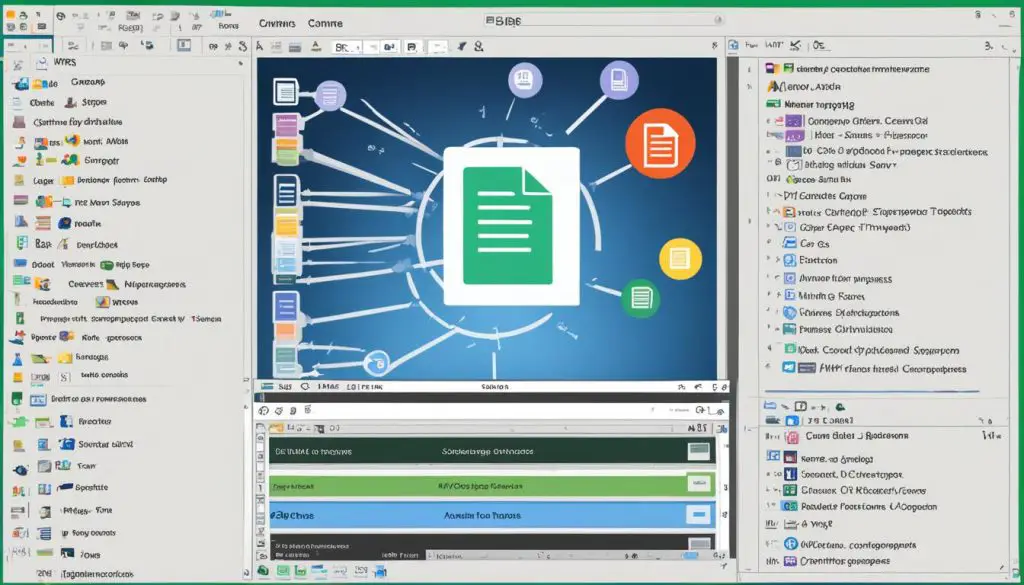What are MIME Types – Explained
MIME types, or Multipurpose Internet Mail Extensions, are a critical aspect of web development. They serve as a way to categorize and identify the nature and format of files or data on the internet. By defining how content should be handled by browsers and other internet applications, MIME types ensure proper interpretation and rendering.
The Internet Assigned Numbers Authority (IANA) is responsible for standardizing and maintaining an official list of MIME types. Each MIME type consists of a type and a subtype separated by a slash. For example, the MIME type for HTML files is text/html, while for JPEG images, it is image/jpeg. There are also discrete types like audio, image, text, and video, as well as multipart types used for encapsulating multiple files or messages. Optional parameters can be added to provide further details such as character encoding.
It is crucial for web servers to send the correct MIME type in the HTTP response’s Content-Type header to ensure proper handling and rendering of content.
Key Takeaways:
- MIME types are used to categorize and identify the format of files or data on the internet.
- They play a vital role in web development, determining how content is handled and rendered.
- The Internet Assigned Numbers Authority (IANA) maintains the official list of MIME types.
- MIME types consist of a type and subtype, with optional parameters for further details.
- Web servers should send the correct MIME type in the Content-Type header for proper interpretation of content.
Importance of MIME Types in Web Development
MIME types are crucial in web development as they play a vital role in accurately interpreting and handling different types of content. They ensure that web browsers and other internet applications can correctly render and display files, such as HTML, images, videos, PDFs, and more. By specifying the appropriate MIME type in the server’s response header, developers can ensure that content is presented in its intended format, maintaining its functionality and preserving user experience.
One of the primary benefits of MIME types is their ability to enforce security measures. By properly identifying and classifying file types, browsers can apply necessary restrictions or precautions to mitigate potential security risks. For example, executable files may be flagged as potentially harmful and trigger a warning or prompt before execution, protecting users from potential malicious content.
MIME types provide the following advantages in web development:
- Accurate Interpretation: By specifying the correct MIME type, web developers ensure that content is rendered using the appropriate browser plugins or rendering methods, guaranteeing its presentation accuracy.
- Intact Functionality: MIME types preserve the intended functionality of files, ensuring that they can be properly utilized and interacted with by users.
- Enhanced Security: By classifying and identifying file types, MIME types enable browsers to enforce security measures, protecting users from potential threats or risks.
- Optimized User Experience: Properly utilizing MIME types ensures that content is displayed and accessed in the most efficient and seamless manner, enhancing the overall user experience.
MIME types provide an essential framework for file interpretation, security enforcement, and user experience optimization in web development.
In conclusion, MIME types in web development are of utmost importance. They ensure the accurate interpretation and handling of various file types and enhance security measures. By properly utilizing MIME types, web developers can optimize user experiences and guarantee the intended functionality of content.
Common MIME Types in Web Development
When it comes to web development, there are several MIME types that are commonly used to specify the nature and format of files or data. Having a good understanding of these MIME types is essential for developers to ensure proper handling and rendering of content. Some of the most frequently encountered MIME types include:
- text/html: This MIME type is used for HTML files, which are the building blocks of web pages.
- image/jpeg: JPEG is a popular image format, and this MIME type is used for JPEG images.
- application/pdf: This MIME type is used for PDF documents, which can be easily viewed and printed.
- audio/mpeg: MPEG is a commonly used audio format, and this MIME type is used for MP3 audio files.
- video/mp4: MP4 is a widely supported video format, and this MIME type is used for MP4 video files.
- application/json: JSON is a popular data interchange format, and this MIME type is used for JSON files.
- text/css: CSS is used to style web pages, and this MIME type is used for CSS files.
- application/msword: This MIME type is used for Microsoft Word documents.
These are just a few examples of the many MIME types used in web development. Each MIME type serves a specific purpose and helps browsers and other applications interpret and handle different types of content in the intended way.
Setting MIME Types in Apache
In Apache, you can set the MIME types for files using the “AddType” directive in either the server’s configuration file or an ‘.htaccess’ file. This allows you to specify how the server should handle and interpret different types of content. The syntax for setting a MIME type is as follows:
AddType mime-type extension
The mime-type parameter represents the desired MIME type for the file, while the extension parameter specifies the file extension to associate with the MIME type. For example, if you want to set the MIME type for JPEG images, you would use the following directive:
AddType image/jpeg .jpg
This tells the server that any file with a ‘.jpg’ extension should be treated as a JPEG image. Similarly, you can set MIME types for other file types, such as HTML, CSS, JavaScript, and more, using the appropriate MIME type and file extension.
It’s important to ensure that you set the correct MIME types for your files to ensure proper handling and interpretation by browsers and other web applications. Incorrect MIME types can lead to unexpected behavior and display issues. Therefore, it’s recommended to consult the official list of MIME types or refer to relevant documentation when specifying the MIME types for your files.
By setting the appropriate MIME types in Apache, you can ensure that your website’s content is delivered correctly and accurately to users, improving the overall user experience.
Here’s an example to illustrate how MIME types are set in Apache:
| MIME Type | File Extension |
|---|---|
| text/html | .html |
| text/css | .css |
| application/javascript | .js |
By including the appropriate MIME types in your Apache configuration, you ensure that files with these extensions are served with the correct content type, enabling browsers to interpret and display them correctly.
Setting MIME types in Apache is an essential step in web development to ensure proper handling and interpretation of files by browsers and web applications.
MIME Types in HTTP
MIME types, or Multipurpose Internet Mail Extensions, are not only important for web development but also an integral part of the HTTP protocol. When a server sends a response to a client, it includes a “Content-Type” header, which specifies the MIME type of the content being sent. This allows the client, usually a browser, to determine how to handle and display the content.
For example, if the server sends a Content-Type of “text/html”, the browser knows that the response contains HTML content and can render it accordingly. Similarly, if the server sends a Content-Type of “image/jpeg”, the browser knows that the response contains a JPEG image and can display it properly.
By properly setting the Content-Type header, web developers can ensure that their content is interpreted correctly by the client. This is especially important when dealing with different file formats, such as HTML, CSS, JavaScript, images, videos, and more. Each file type requires a specific MIME type to be set in order for the client to handle it appropriately.
“The proper use of MIME types in HTTP is crucial for seamless content delivery and optimal user experience.”
Why are MIME Types important in HTTP?
MIME types play a vital role in the HTTP protocol for several reasons:
- Accurate Content Handling: By specifying the correct MIME type, web developers ensure that the client interprets and renders the content as intended. This allows for consistent and accurate display of different file types, ensuring a seamless user experience.
- Proper Plugin or Rendering Method: Browsers rely on MIME types to determine the appropriate plugin or rendering method for displaying content. For example, a PDF file may require a PDF viewer plugin, while an image file may be displayed using an image viewer. By setting the correct MIME type, the browser can handle the content accordingly.
- Resource Optimization: MIME types help in optimizing bandwidth usage by allowing the client to selectively download and process only the content it supports. For example, a browser can choose not to download large video files if it doesn’t support the specified MIME type, saving bandwidth and improving performance.
Best Practices for Setting MIME Types
Setting the correct MIME types in HTTP responses is crucial for proper content interpretation and delivery. Here are some best practices to follow:
- Refer to the official IANA MIME type list: The Internet Assigned Numbers Authority (IANA) maintains an extensive list of official MIME types. Refer to this list to ensure accurate and up-to-date MIME type assignments for various file formats.
- Set MIME types based on file extensions: In many cases, MIME types can be determined based on the file extension. For example, files with a “.html” extension should have a MIME type of “text/html”. Utilize this information to set appropriate MIME types for different file formats.
- Consider the intended purpose of the content: MIME types provide a way to categorize content based on its purpose. Consider the specific purpose of the content and choose an appropriate MIME type to ensure proper handling and interpretation.
- Verify compatibility across browsers and platforms: Test your website or application on different browsers and platforms to ensure that the specified MIME types are recognized and handled correctly. This helps in maintaining cross-compatibility and a consistent user experience.
By adhering to these best practices, web developers can ensure that their content is delivered correctly and consistently across various platforms and devices.
Example MIME Types in HTTP Responses
Here is an example of an HTTP response with the corresponding “Content-Type” header specifying the MIME type:
| HTTP Response | Content-Type Header |
|---|---|
| HTML Document | text/html |
| Plain Text Document | text/plain |
| JPEG Image | image/jpeg |
| PNG Image | image/png |
| PDF Document | application/pdf |
| JavaScript File | application/javascript |
It is essential to set the correct MIME type based on the content being served to ensure proper rendering and interpretation.

MIME Types for Audio and Video files
Audio and video files have specific MIME types that are used to ensure proper handling and playback in browsers and media players. These MIME types allow the browser to understand the file format and choose the appropriate plugin or player for rendering the content.
Here are some commonly used audio MIME types:
- audio/mpeg: This MIME type is used for MP3 audio files, which are widely supported and commonly used for music and audio recordings.
- audio/wav: This MIME type is used for WAV audio files, which provide high-quality, lossless audio playback.
- audio/ogg: This MIME type is used for OGG audio files, which are an open and free format often used for streaming and encoding audio.
- audio/aac: This MIME type is used for AAC audio files, which offer high-quality audio compression and are commonly used for music streaming.
Similarly, video files also have specific MIME types to ensure proper playback. These MIME types allow the browser to identify the video format and select the appropriate video player or plugin.
Here are some commonly used video MIME types:
- video/mp4: This MIME type is used for MP4 video files, which are widely supported and commonly used for streaming and sharing videos.
- video/webm: This MIME type is used for WebM video files, which are an open and free format often used for HTML5 video playback.
- video/ogg: This MIME type is used for OGG video files, which offer a royalty-free format for video streaming and encoding.
- video/mpeg: This MIME type is used for MPEG video files, which provide a common format for storing and sharing video content.
Having the correct MIME type for audio and video files is essential for ensuring that they are properly recognized and played back by browsers and media players. By using the appropriate MIME types, web developers can provide a seamless and enjoyable multimedia experience for their users.
Conclusion
In conclusion, MIME types are essential components of web development, enabling accurate identification and categorization of different types of content. By assigning the correct MIME types, web developers ensure that browsers and other internet applications can handle and display content accurately, resulting in a seamless user experience.
Setting the appropriate MIME types is crucial to ensure that content is interpreted and rendered as intended. By staying up-to-date with the official list of MIME types and following best practices, web developers can ensure compatibility and security in their web applications.
Overall, understanding and implementing MIME types is a fundamental aspect of web development. By recognizing their importance and adhering to proper usage, developers can optimize the functioning of their websites and enhance the user experience.
FAQ
What are MIME types?
MIME types, or Multipurpose Internet Mail Extensions, are a way to categorize and identify the nature and format of files or data on the internet.
Why are MIME types important in web development?
MIME types are crucial in web development as they determine how content should be handled by browsers and other internet applications, ensuring that content is displayed correctly and maintains its intended functionality.
What are some common MIME types used in web development?
Some frequently encountered MIME types in web development include text/html for HTML files, image/jpeg for JPEG images, application/pdf for PDF documents, and audio/mpeg for MP3 audio files.
How can MIME types be set in Apache?
MIME types for files can be set in Apache using the “AddType” directive in the server’s configuration file or an .htaccess file.
How do MIME types work in HTTP?
MIME types are part of the HTTP protocol. When a server sends a response to a client, it includes a “Content-Type” header that specifies the MIME type of the content being sent. This allows the client to determine how to handle and display the content.
What are the MIME types for audio and video files?
Some commonly used MIME types for audio files include audio/mpeg for MP3 files and audio/wav for WAV files. For video files, commonly used MIME types include video/mp4 for MP4 files and video/quicktime for QuickTime files.
- About the Author
- Latest Posts
Mark is a senior content editor at Text-Center.com and has more than 20 years of experience with linux and windows operating systems. He also writes for Biteno.com






